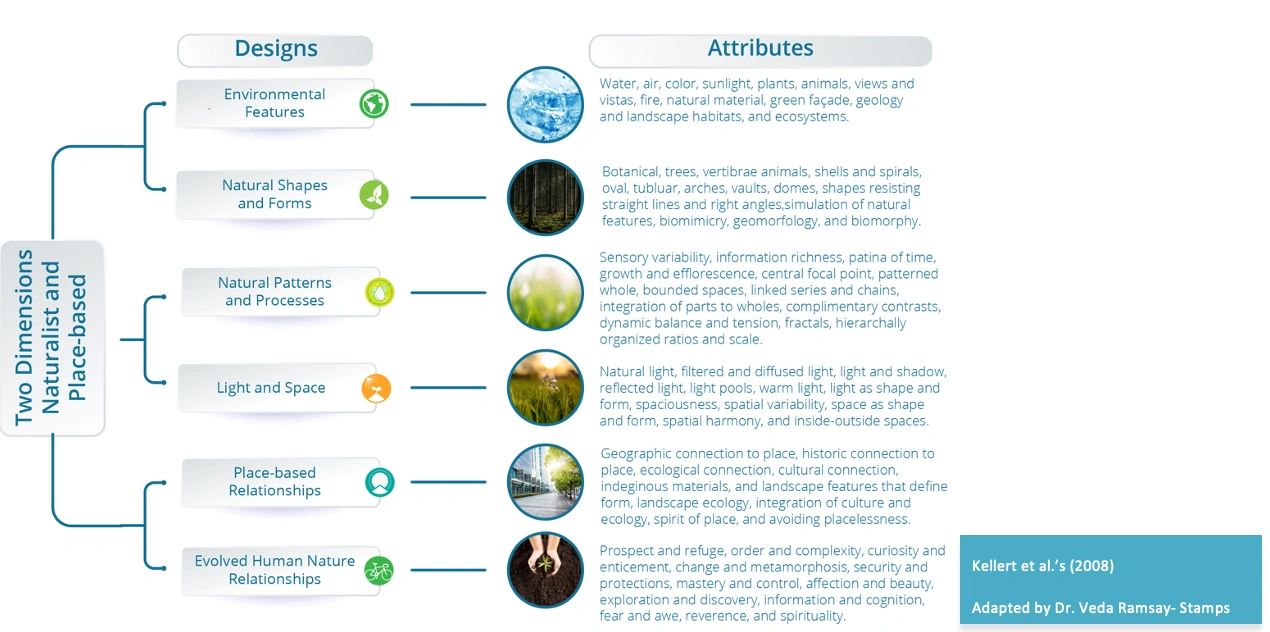Did you know that incorporating nature into our built environment can have a significant impact on our health and wellbeing? In today’s blog, we delve into the concept of biophilic design, which aims to connect us back with nature through design elements such as green walls, natural light, and water features. As the CEO of Bio Equity Ed, I have researched the benefits of biophilia and its ecological impact on Black Student Wellbeing. Join me as we explore ways to activate our biophilia and its transformative powers in our environments.
What is biophilia?
Biophilia refers to our innate connection with nature, which has been proven to have both physical and psychological benefits. The concept of biophilia was first introduced by biologist Edward O. Wilson in his book “Biophilia,” where he hypothesized that humans have a natural affiliation with other living organisms. Biophilic design, on the other hand, is the practice of incorporating natural elements into our built environments. From adding plants to our homes and workspaces to designing buildings that take advantage of natural light, biophilic design seeks to connect us back with nature (see image for more details on design attributes).

The benefits of biophilic design:
Research has shown that biophilic design can have significant positive impacts on our health and wellbeing. Exposure to natural light, for example, can improve our circadian rhythm and help us sleep better at night. Studies have also shown that incorporating plants into our workspaces can lead to higher productivity and lower stress levels. Even just looking at images of nature has been found to reduce stress levels.
Examples of biophilic design:

There are many ways to incorporate biophilic design into our built environments. One example is the use of green walls, which are walls covered in plants. Not only do green walls add natural beauty to a space, but they also have air-purifying properties. Another example is the use of water features such as fountains, which can have a calming effect on the mind and body. Finally, the use of natural materials such as wood or stone can help bring the outdoors inside.
How biophilic design can benefit schools:
Schools are a perfect place to implement biophilic design as they can have a direct impact on student wellbeing. Studies have shown that exposure to natural light and views of nature can lead to better academic performance and behavior. Incorporating plants and natural materials into schools can create a sense of calm and promote a positive learning environment. Additionally, biophilic design can create opportunities for students, particularly Black and Brown students who lack access to learn about the importance of nature and sustainability.
As we’ve seen, biophilic design can have a profound impact on our health and wellbeing. As school leaders, CBO leaders, housing developers, and policy makers you have the power to create environments that foster wellbeing by incorporating biophilic design. At Bio Equity Ed, we are passionate about using biophilic design to create healthier and happier environments for communities that have historically not had access. If you have any questions or would like to learn more, please don’t hesitate to contact us. Thank you for joining me on this exploration to activate the power of biophilic design.

